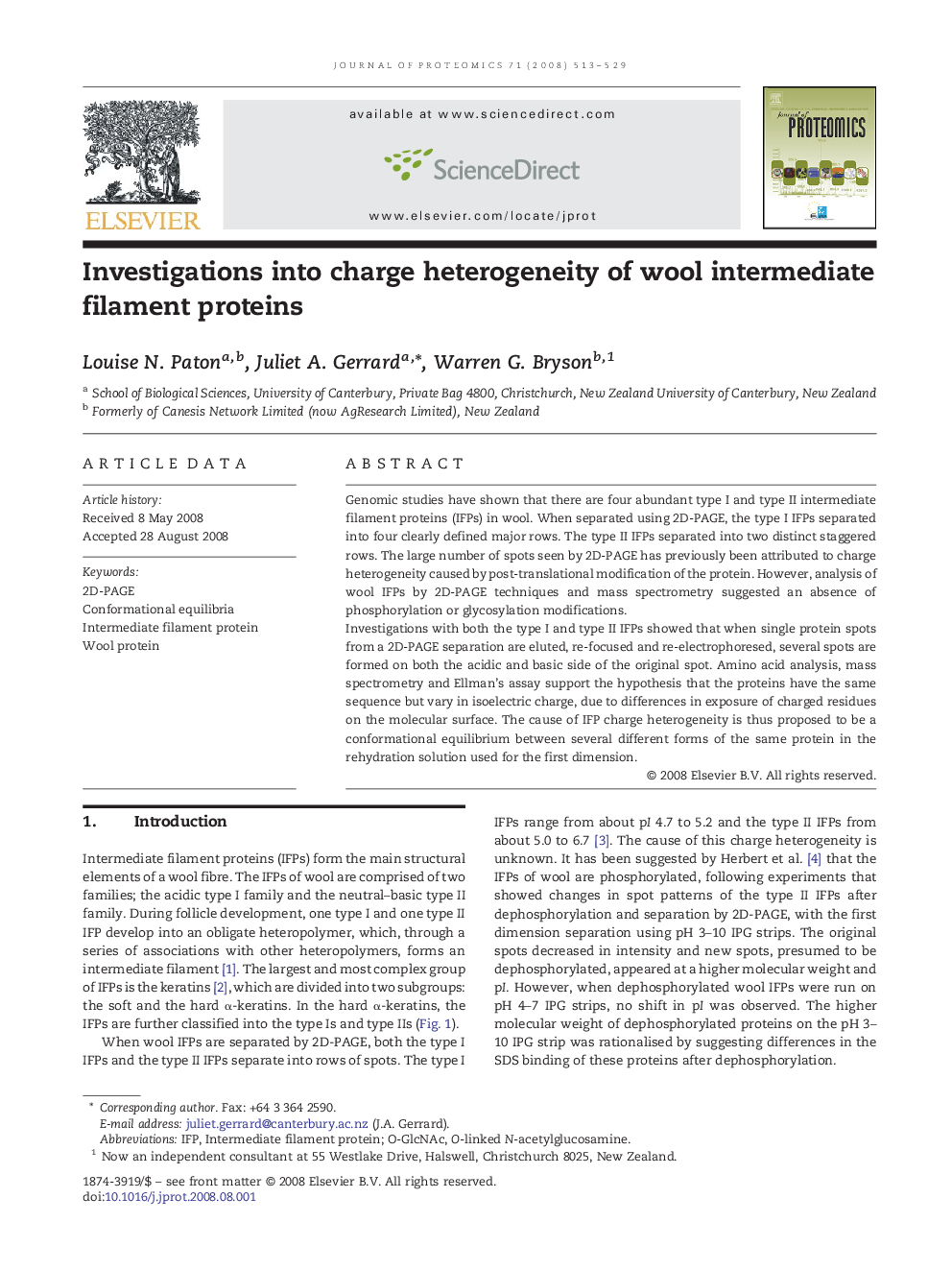| Article ID | Journal | Published Year | Pages | File Type |
|---|---|---|---|---|
| 1227220 | Journal of Proteomics | 2008 | 17 Pages |
Genomic studies have shown that there are four abundant type I and type II intermediate filament proteins (IFPs) in wool. When separated using 2D-PAGE, the type I IFPs separated into four clearly defined major rows. The type II IFPs separated into two distinct staggered rows. The large number of spots seen by 2D-PAGE has previously been attributed to charge heterogeneity caused by post-translational modification of the protein. However, analysis of wool IFPs by 2D-PAGE techniques and mass spectrometry suggested an absence of phosphorylation or glycosylation modifications.Investigations with both the type I and type II IFPs showed that when single protein spots from a 2D-PAGE separation are eluted, re-focused and re-electrophoresed, several spots are formed on both the acidic and basic side of the original spot. Amino acid analysis, mass spectrometry and Ellman's assay support the hypothesis that the proteins have the same sequence but vary in isoelectric charge, due to differences in exposure of charged residues on the molecular surface. The cause of IFP charge heterogeneity is thus proposed to be a conformational equilibrium between several different forms of the same protein in the rehydration solution used for the first dimension.
